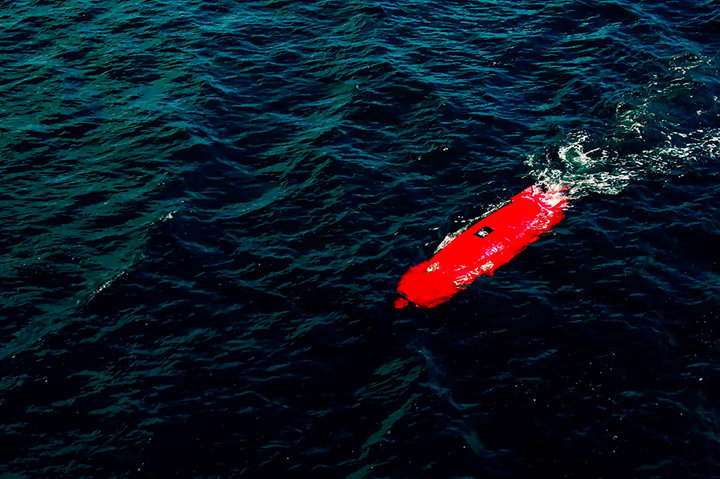Anduril Industries acquires AUV startup Dive Technologies
Dive builds autonomous underwater systems using large-format additive manufacturing and composite materials for commerial and defense-based undersea exploration.

Photo Credit: Dive Technologies
Defense technology company Anduril Industries (Costa Mesa, Calif., U.S.) announced it has acquired startup Dive Technologies (Quincy, Mass., U.S.), known for its 3D-printed composite autonomous underwater vehicles (AUVs). This acquisition expands Anduril’s suite of autonomous systems, extends its unmanned capabilities to the undersea domain and significantly accelerates the company’s strategic growth.
Dive Technologies’ DIVE-LD AUV is a modular and customizable AUV that can be optimized for a variety of defense and commercial mission types such as long-range oceanographic sensing, undersea battlespace awareness, mine countermeasures, anti-submarine warfare, seabed mapping and infrastructure health monitoring.
“The world beneath the ocean is completely different than the one above it. It requires different types of sensors, modalities and problem-solving than the work we are doing in air, land and space,” says Anduril co-founder and CEO Brian Schimpf. “The Dive Technologies team brings unparalleled, deep domain expertise under the sea as well as a shared commitment to transforming U.S. and allied military capabilities with advanced technology. We are thrilled to have them on board.”
Dive uses large-format additive manufacturing (LFAM) techniques and a novel system architecture to rapidly produce the DIVE-LD at what the company says is a fraction of the time and cost of existing AUVs. Once integrated into Anduril’s autonomy software, Lattice OS, the defense company believes the next iteration of DIVE-LD will further disrupt this segment of the market.
“We built Dive to make undersea exploration safer, smarter and cheaper, and to offer customers the highest level of customization. In four years, we reinvented AUVs by building a new system architecture from the ground up and bringing 3D printing to subsea robotics,” adds Dive Technologies co-founder and CEO Bill Lebo. “With Anduril, we will rapidly scale our team, technology and production to ensure our military partners have the best, most strategic advantage and our commercial customers have the most reliable tech in the greatest depths of the world’s oceans. We’re excited for the next chapter.”
The acquisition follows Anduril’s selection by U.S. Special Operations Command (Tampa, Fla., U.S.) to be its Systems Integration Partner, supporting counter unmanned systems efforts under a nearly $1 billion Indefinite Delivery Indefinite Quantity (IDIQ) contract.
Related Content
-
From the CW Archives: Airbus A400M cargo door
The inaugural CW From the Archives revisits Sara Black’s 2007 story on out-of-autoclave infusion used to fabricate the massive composite upper cargo door for the Airbus A400M military airlifter.
-
Materials & Processes: Fibers for composites
The structural properties of composite materials are derived primarily from the fiber reinforcement. Fiber types, their manufacture, their uses and the end-market applications in which they find most use are described.
-
Materials & Processes: Fabrication methods
There are numerous methods for fabricating composite components. Selection of a method for a particular part, therefore, will depend on the materials, the part design and end-use or application. Here's a guide to selection.
















